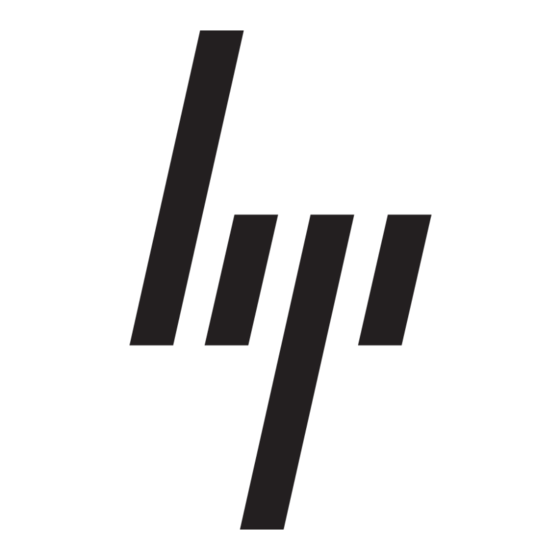are connected to the management network, providing redundant management network connections to
each enclosure.
A serial port on each BladeSystem Onboard Administrator module provides full out-of-band CLI
access to the BladeSystem Onboard Administrator and is used for BladeSystem Onboard
Administrator firmware flash recovery. USB ports on the BladeSystem Onboard Administrator are
used to connect DVD drives to support the DVD feature in the c7000 enclosure. All c-Class enclosures
support two enclosure link connectors that provide private communications between enclosures linked
with CAT5 cable. In addition, the enclosure link-up connector provides an enclosure service port for
temporarily connecting a laptop PC to any of the linked enclosure BladeSystem Onboard
Administrators for local diagnostics and debugging.
Updating firmware
The BladeSystem Onboard Administrator manages firmware updates for the enclosure's management
devices. Updating server blade firmware including server BIOS, NIC and mezzanine BIOS, and
ProLiant Onboard Administrator (iLO 2) is possible using HP System Update Manager or the blade
firmware update maintenance CD. These utilities can be connected to all the server blades in the
enclosure using the BladeSystem Onboard Administrator enclosure DVD feature. When the active
BladeSystem Onboard Administrator detects an external USB DVD drive plugged into the USB port, it
scans the DVD drive for a CD or DVD disk. This disk can then be connected to one or more server
blades at the same time using the BladeSystem Onboard Administrator GUI, CLI, or Insight Display.
Redundant enclosure management
Redundant enclosure management is an optional feature of the c7000. It requires installing a second
BladeSystem Onboard Administrator module in the c7000 enclosure to act as a completely redundant
controller in an active-standby mode. Using redundant modules in the c7000 enclosure provides
complete fault tolerance. The redundancy logic is based on a continuous heartbeat between the two
modules over a dedicated serial connection (Figure 4). If the period between heartbeats exceeds a
timeout, the standby module automatically takes control of the enclosure and becomes the active
BladeSystem Onboard Administrator.
User interfaces for the BladeSystem Onboard Administrator
Three user interfaces to the BladeSystem Onboard Administrator allow control and provide
information about the enclosure and installed components:
Web browser GUI
Scriptable CLI
Insight Display diagnostic LCD panel
Additionally, the BladeSystem Onboard Administrator with KVM adds the ability to directly connect a
KVM switch through the VGA port. Remote network access to the GUI and CLI is available through the
management Ethernet port. A serial port is available for local CLI access and flash recovery. The
c-Class enclosure link-up port is also available as the service port for temporary local Ethernet access
to the BladeSystem Onboard Administrators and devices in linked enclosures. Insight Display is
accessed directly through the buttons on the display or remotely through the GUI.
Security
User authentication maintains security for all user interfaces. User accounts created in the BladeSystem
Onboard Administrator define three user privilege levels and the component bays to which each level
is granted access. The BladeSystem Onboard Administrator stores the passwords for local user
accounts and can be configured to use Lightweight Directory Access Protocol (LDAP) authentication for
user group accounts.
8

